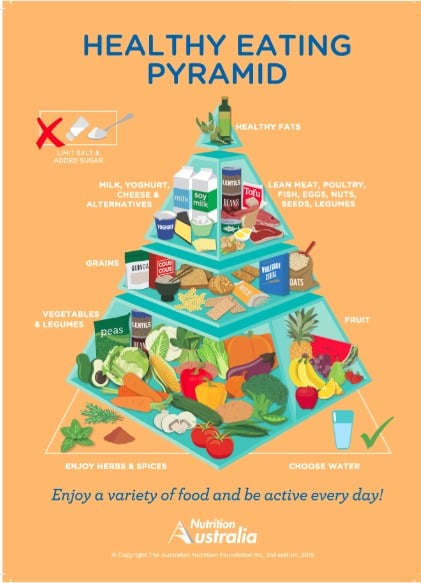
By Thomas Oriti.
Leading nutritional scientists are calling for a radical re-think in the way we understand diet that looks at how mixtures of nutrients influence health rather than nutrients in isolation.

The old-fashioned food pyramid may be outdated as nutritionists develop a new model that will help people better understand diets and disease. Source: Nutrition Australia
Researchers at the University of Sydney's Charles Perkins Centre have developed a new framework for nutritional health that looks at the links between certain diets, health and disease.





























































































